1/48 Classic Resin Airframes/Hasegawa Bf-109Z “Zwilling”
Back before there was Classic Airframes, there was Classic Resin Airframes, a series of resin conversion sets released by Jules Bringuer in the 1990s. I found the kit for the Zwilling conversion at the LHS back in 1995. By the time I decided to do it in 1999, the Bf-109F kits were not available, so I did a "production" version based on two Bf-109G-2 kits. The photos are so old, they were scanned from actual 35mm prints.
History:
While the Bf-109K series was the last Bf-109 to see production, it was not the last to see development to prototype status. Perhaps the most intriguing variant of the basic Bf-109 actually built was the Zwilling, or "Siamese Twin" version.
The Zwilling concept originated with Generaloberst Ernst Udet, who - in 1940 - proposed the marriage of two He-111 airframes to create an aircraft capable of towing the Me-321 Gigant assault/transport glider. The success of this development led to a study by Messerschmitt of the possibility of mating two Bf-109 airframes to create a heavy Zerstoerer, while avoiding the disruption of production lines that would inevitably result from the introduction of an entirely new airframe.
The Technischen Amt expressed interest in the proposal, since it appeared to offer a considerable advance in performance over any other current or planned Zerstoerer, while conforming to RLM policy restricting production to a small number of basic types.
Two Bf-109F airframes were allocated for the conversion, with the project commencing late in 1942. The two airframes were virtually unchanged, apart from the introduction of a keel in each airframe to carry the landing gear, which would be moved to operate from the centerline of each fuselage. The components were married by means of a parallel-chord center section carrying two radiators and gear wells, with a central strong point capable of carrying a 1,102-pound bomb, and a parallel horizontal stabilizer. The starboard fuselage had the cockpit removed and replaced by a fuel tank with a metal fairing over the position.
While work proceeded, Messerschmitt continued planning, basing the production design on the Bf-109G, with either the DB605A or Jumo 213E engine for power. Armament was projected as two engine-mounted 30mm MK108s, two similar weapons in gondolas under the outer wings, with a single MK103 slightly to starboard of the centerline inside the center wing section. For the fast bomber role, a single 1,102-pound bomb would be carried on the centerline, with a 551-pound bomb under each fuselage.
The prototype was completed in 1943. Preparation for flight trials was proceeding when the prototype was severely damaged during a bombing raid on the factory. The program was abandoned in 1944. The only fighter based on this concept that would ever fly operationally was the North American F-82 Twin Mustang.
However, for my purposes, I have presumed that the prototype did fly successfully, and that in early 1944, 12 pre-series machines, based on the Bf-109G, were ordered. These aircraft operated as the "Erprobungsstaffel Zwilling," attached to II/ZG76 in the late summer and fall of 1944.
Construction:
At one time or another, I have heard nearly every modeler who builds 109s say "I sure wish I could do a Zwilling." However, anyone with any sanity, after looking into the major cutting and hacking and scratchbuilding involved in such a project, has usually backed off.
At a price of over $40 for the conversion set, and $25 each for the necessary kits, this was not an inexpensive conversion project at the time. The Bf-109F kits were out of production so I therefore picked up two of the Bf-109G-2 kits and decided to make the "pre-production" version.
The actual construction work is fairly simple. the resin set provides the lower wing section out to midpoint of the lower wings outboard of the standard position of the landing gear, with the upper part of the center section and including radiator baths for the center section; underwing gondolas; a resin plug for the starboard cockpit; and the horizontal stabilizer. This is nice clean resin, the only trouble (for me) being that it was molded so that the radiator doors were closed and that portion of the flap in the center section was raised. I cut away the flap and radiator baths, scratchbuilt the radiator doors, and was on my way.
After the lower wings were cut away (on panel lines), the construction was straightforward, other than filling in the mounts for the machine guns on the cowlings. This was filled with cyanoacrylate glue and hit with accelerator, sanded smooth and then covered with Mr. Surfacer 500 to get a smooth surface.
The cockpit was assembled out of the box, and equipped with seatbelts from the Eduard photo-etch German seatbelts set.
I painted the model in a modified version of the camouflage pattern used on the Bf-109G-10, with upper surfaces RLM75 and RLM82, and RLM76 lower surfaces.
I used decals from an Aeromaster Me-410 sheet, with the wooden clog insignia of II/ZG76 and squadron codes, with standard late-war national insignia from various Bf-109 sheets in the decal dungeon.
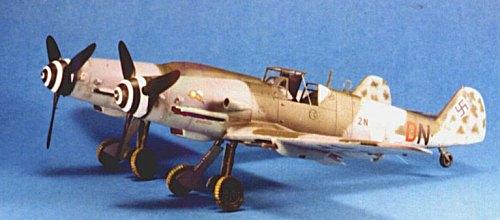
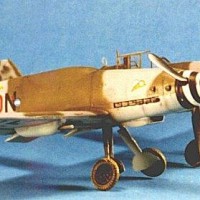
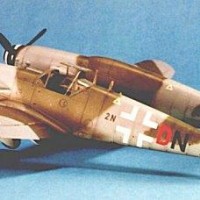
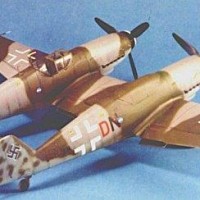
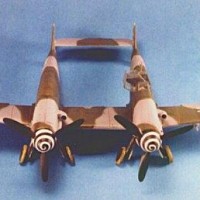
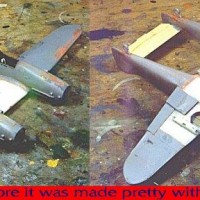
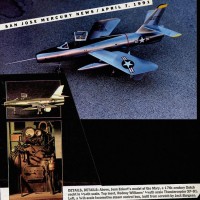

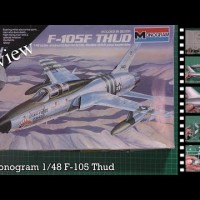
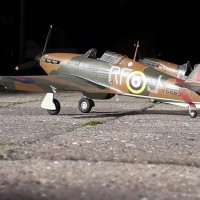
Very cool Tom. I like it!
Oh those gerries...
Wonderful conversion. Must have taken a bit to get it all lined up i presume. For me the ultimate what if version would be with G-6 bulges (or later...), tall fins and frameless cockpits.
Cool concept with some fire-power to boot. Good one Tom
Great concept and great build, Tom!
Very interesting conversion, but like you said, not to be taken lightly even if this particular resin set was straightforward for the most part. The end result is quite stunning, thanks for bringing back this article Tom
Very impressive Tom. Must have taken some fiddling to get all six wheels on the ground.
Very cool project although i've always thought of it as an ugly plane. I would like to try my hand at making a P38 style version of the 109 Zwilling concept one day.